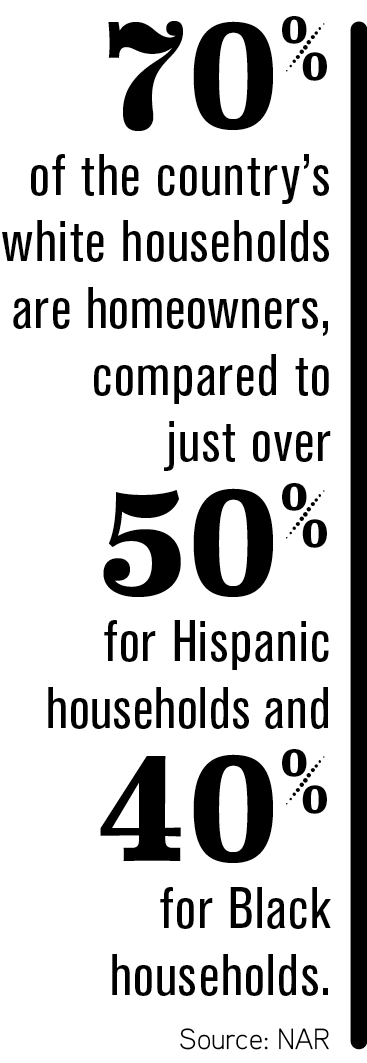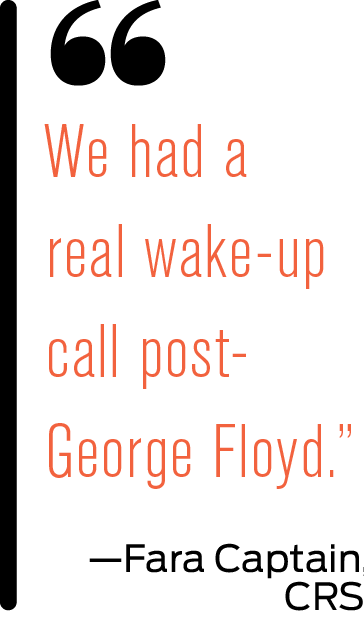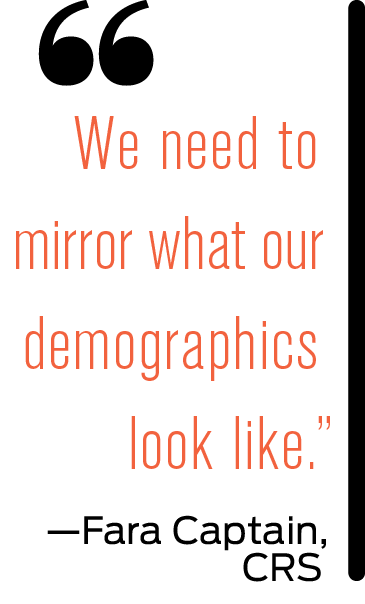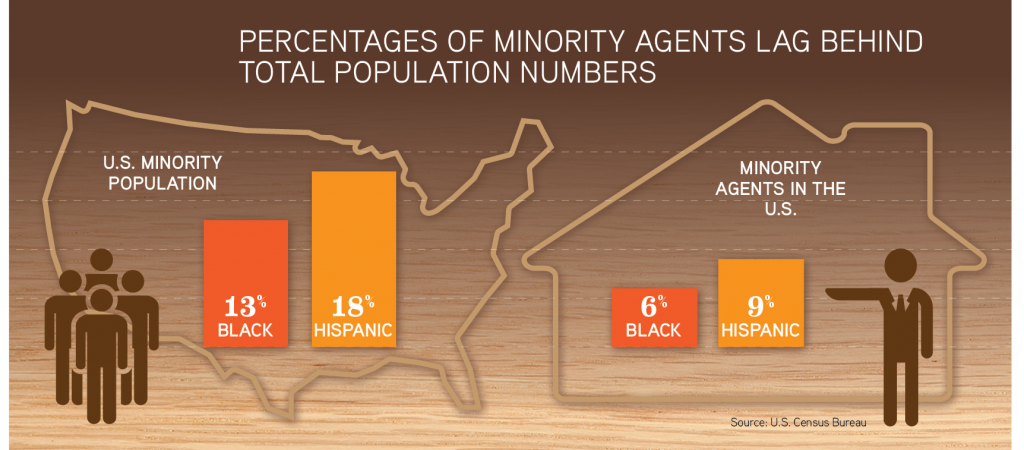Real estate professionals are working tirelessly to increase diversity and inclusion within their ranks
By Matt Blake
Nancy Metcalf, CRS, with Coldwell Banker Realty in Honolulu, Hawaii, was vexed.
The real estate agent has spent her 31-year career amid Hawaii’s racially diverse population.
 So, when she took the National Association of REALTORS® fair housing simulation test, in which agents navigate through the Sims-like town of Fairhaven, Metcalf expected the training to wrap up in 60 minutes.
So, when she took the National Association of REALTORS® fair housing simulation test, in which agents navigate through the Sims-like town of Fairhaven, Metcalf expected the training to wrap up in 60 minutes.
Instead, it took over two hours. “I was kind of stunned at how poorly I was doing,” she recalls. “In my mind, I was very fair housing-focused. But I realized that our industry needs to keep learning.”
Metcalf learned she might have a bias in assuming where her clients would like to live. She has since grown more resolute in ensuring prospective homebuyers see different neighborhoods including listening intently to her clients’ preferences and changing what she shows once the process begins.
Other CRS agents described themselves or a colleague with biases in not understanding specific obstacles for minority real estate agents, or being reluctant to respect the rights of transgendered colleagues.
Though these agents brought different perspectives to the subject, they each agreed REALTORS® made progress the last two years on diversity, equity and inclusion. But there is a long way to go.
Wake-up call
“We had a real wake-up call post-George Floyd,” says Fara Captain, CRS, broker at Captain & Co. Real Estate in Memphis, Tennessee.
 Specifically, it was five months after Floyd’s death that agents reckoned with real estate’s fraught past and uncertain present. In November 2020, Charlie Oppler, then the president of NAR, apologized for the organization’s prior support of racially restrictive covenants and opposing the 1968 federal Fair Housing Act.
Specifically, it was five months after Floyd’s death that agents reckoned with real estate’s fraught past and uncertain present. In November 2020, Charlie Oppler, then the president of NAR, apologized for the organization’s prior support of racially restrictive covenants and opposing the 1968 federal Fair Housing Act.
“I have to give credit to NAR for providing awareness on the issue,” says Gonzalo Mejia, CRS and agent at Watson Realty in Jacksonville, Florida. “2020 was a very important year for opening conversations.”
One conversation is why there are not more real estate agents of color. The U.S. population is 13% Black and 18% Hispanic, according to the U.S. Census Bureau’s 2020 numbers. Yet, just 6% of real estate professionals are Black and only 9% are Hispanic, according to the census.
“We need to mirror what our demographics look like,” Captain says.
First steps for brokerages
The average real estate agent is a 56-year-old, white female, according to a July 2022 NAR survey. To make real estate more racially diverse, brokerages must “recruit where no one is recruiting,” Captain says.
Also, Captain believes that the industry is stuck on the “diversity” of diversity, equity and inclusion, and not providing equity in the form of specific resources to help minority agents.
 For instance, a Spanish-speaking agent should receive Spanish brochures, be connected to a Spanish-speaking mortgage lender and be given an introduction to the nearest chapter of the National Association of Hispanic Real Estate Professionals.
For instance, a Spanish-speaking agent should receive Spanish brochures, be connected to a Spanish-speaking mortgage lender and be given an introduction to the nearest chapter of the National Association of Hispanic Real Estate Professionals.
Brokerages should also partner with the National Association of Real Estate Brokers (NAREB), the oldest trade group focused on Black professionals in the country. In 2021, NAREB introduced a program to provide $5,000 in benefits to new minority agents plus a mentor who works with the agent 5–10 hours a week for one year.
Other financial inducements should be looked at, Captain says, including scholarships for agent training. Mejia added another requirement for brokerages: Discussing race, gender identity and sexual orientation with agents. At Watson Realty and in his work on the LGBTQ Real Estate Alliance, Mejia says he is sympathetic to agents suffering from “identity anxiety,” where “they feel the pressure to do everything right.”
“It’s okay to say, ‘I don’t get it,’ and then go ask somebody,” he says. “Don’t let a lack of knowledge become fear.”
DEI and home ownership
Diversity, equity and inclusion is not just important for its own sake. It is intended to help close a gap in which north of 70% of the country’s white households are homeowners, compared to just over 50% for Hispanic households and 40% for Black households, according to both census and NAR data.
Mejia sees the racial home ownership gap as something of a chicken-egg problem. “The lack of diverse agents correlates with low home ownership rates, because some minorities don’t see real estate as a viable opportunity,” he says.
On the positive side, brokerages who help boost Black and Hispanic home ownership rates could spark a pipeline of diverse agents to the profession.
To do this, agents must be aware of any present bias. Metcalf advises brokerages to create fair housing training, or at least use NAR’s and local associations’ resources. Another step is specific training over gender identities, and making clients feel included.
For Captain, that means, in part, having her agents put their pronouns on the company’s website.
Progress on diversity, equity and inclusion is an evolving path, CRS members say. It can involve the aforementioned steps. But it most requires flexibility and openness.
“Education is very big to me,” Metcalf says. “Sometimes, you just have to relearn.”

For more resources on diversity, equity and inclusion, visit NAR.realtor/diversity.
Photo: iStock.com/ktsimage








